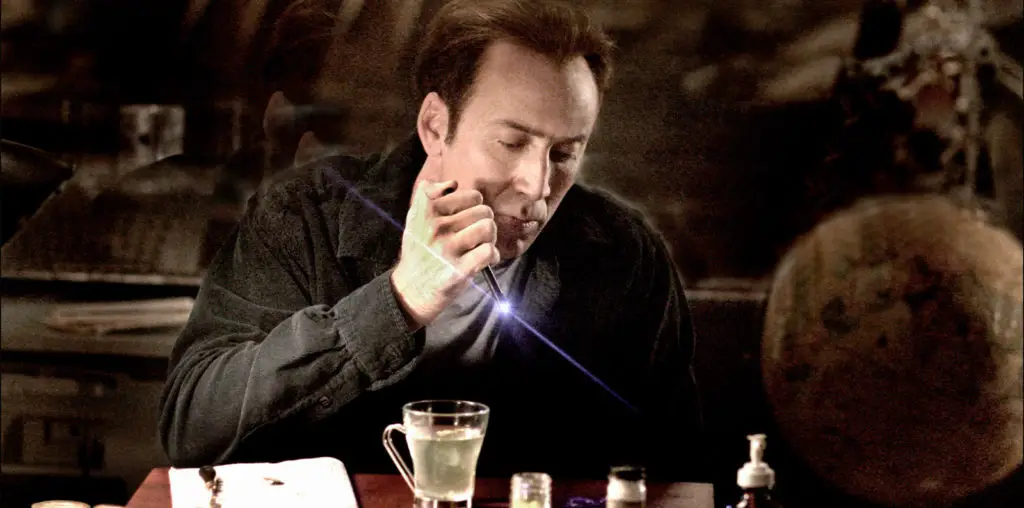
During the 1930s and 1940s, Dr. Alfred Blalock, a white surgeon from Georgia, and Vivien Thomas, an African-American with only a high school education but who served as his chief technician, worked together to establish breakthroughs in the treatment of shock and pediatric heart surgery. Their unusual teamwork, which defied the medical and social conventions of the day, is the subject of the serious-minded and somewhat stolid new documentary “Partners of the Heart.”
The story of Vivien Thomas could have been one of tragic unrealized potential. A brilliant youth in segregated Nashville of the 1920s, Thomas worked in his family’s carpentry business and saved a considerable sum to finance college studies to become a doctor. However, the Great Depression saw the evaporation of his savings and he was forced to take a job as a janitor in the medical laboratory at Vanderbilt University. At the lab, he gained the notice of Dr. Alfred Blalock, who put his trust in the 19-year-old Thomas and elevated his to the position of chief researcher (although to the university’s personnel records, he was still a janitor in rank and salary). Blalock and Thomas spent considerable hours in researching the cause and effect of shock on the human body. Their findings (although credited solely to Blalock) would prove invaluable to the treatment of battle-wounded soldiers during World War II.
As a result of the shock research, Blalock was invited to head the medical research efforts at Johns Hopkins University in Baltimore. Blalock stated that he would that the position only if Thomas join him as part of the university’s staff. This was an unprecedented move, as the university’s only African-American employees were found in menial labor positions; there were no black students or teachers at all. The presence of Thomas in a major research position initially created friction to many within the university, though over time he was put in charge of training medical interns at the school.
At Johns Hopkins, Blalock and Thomas focused on pediatric health issues. With the input of Dr. Helen Taussig (herself as much a pioneering figure as Thomas, although the film downplays that aspect), the duo began intense research in developing the new field of pediatric heart surgery. Thomas invented new surgical tools to enable such delicate procedures (though whether he obtained the patents for them is not clear) and Blalock insisted on having Thomas present when surgery was performed. Their work helped bring about the end of the so-called “blue baby” syndrome which afflicted children with congenital heart defects. Blalock was immediately celebrated around the world for his breakthrough surgery; Thomas’ contributions were belatedly acknowledged over two decades later.
There is no known filmed interview with Thomas and Blalock’s sole appearance on film was his last public appearance at a retirement banquet in 1960 (where Thomas was not invited). Photographs of the two men are also relatively limited. “Partners of the Heart” makes up for the lack of visuals with handsomely-produced recreations directed by Bill Duke, which offers a fascinating glimpse on the state of medical research and treatment during the mid-century. The contemporary portions of the film are directed by Andrea Kalin, which seem far less interesting in comparison.
While “Partners of the Heart” is noteworthy in providing a glimpse into this little-known chapter of medical history, the film frequently seems to avoid asking the tough yet obvious questions. The chief problem here is the film’s refusal to dissect the curious behavior of Blalock. While he was responsible for breaking down one significant racial barrier by insisting that Thomas was hired at Johns Hopkins, he ultimately did nothing more to further the cause of racial equality within the university. In fact, Blalock would boorishly exclude Thomas from any social gatherings connected to the medical community or would only invite him to work as a bartender at such events. That he would also lap up media attention for himself without giving proper due to Thomas is also never questioned here. Blalock’s children, colleagues and students are interviewed here, but at no time does anyone call into question his inconsistent and often hypocritical behavior.
Likewise, Thomas often comes across as something of a cipher. His work with Blalock was clearly a blessing and a curse: while involved in significant medical research, he never enjoyed the opportunity to attend college himself and gain a medical degree (Johns Hopkins gave him an honorary degree towards the end of his life). Yet as presented here, Thomas seems blithely unconcerned over the lack of credit presented to him–and that seems fairly conciliatory, to say the least. The film is also unclear regarding how he viewed the constant humiliations inflicted on him within both his places of employment and within the segregated cities where he lived. Nor do we have a clue whether he was an active supporter of the civil rights movement which ultimately dismantled the legacy of racist shame that disfigured America for too many years.
The Blalock-Thomas collaboration was an extraordinary story, and it is something of a pity that “Partners of the Heart” is such an ordinary film.

